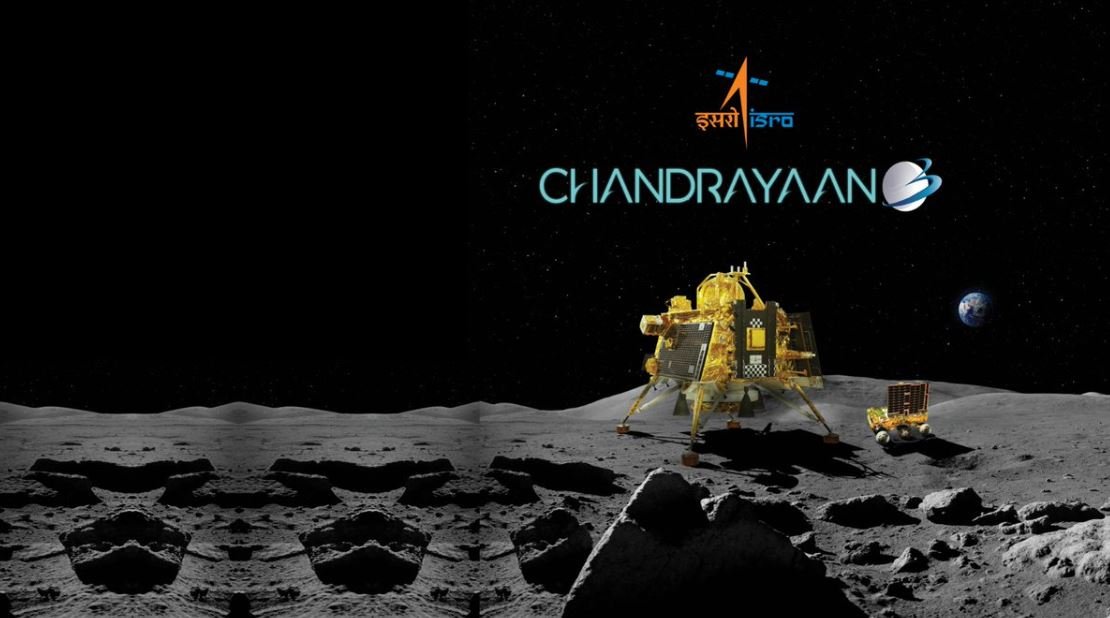Recently the Indian Space Research Organization (ISRO) Launched the Chandrayaan-3 mission into space and made the first probe landing on the south pole of the Moon, which is considered a historical moment in terms of science.
Since the roots of Indian culture are based on religions such as Hinduism, The scientists behind the expedition chose the ancient Sanskrit language to name the mission and spacecraft.
According to ISRO Chairman Sreedhara Somanath, Sanskrit literature is extremely rich, original and philosophical as well as an important content in its “scientific form”. It is not surprising that this language was chosen to name the spacecraft, descent module, and six-wheeled spacecraft; in fact, the rover is already exploring the Moon’s south pole to study the area.
The spacecraft sent into space was called Chandrayaan-3, the landing vehicle was called Vikram, and finally the spacecraft designed to investigate the Moon’s surface was called Pragyan. But what is the real meaning behind these Sanskrit words? TecMundo gathered information to answer this question.
“Once again, I congratulate the ISRO team and all citizens on the successful launch of the Pragyan rover from inside the Vikram module. Vikram’s displacement a few hours after its landing marked the success of another stage of Chandrayaan 3. “Together with my fellow citizens and scientists, I look forward to the information and analysis Pragyan will obtain that will enrich our understanding of the Moon,” said Draupadi Murmu, the current president of India.
What is the meaning of the names Chandrayaan-3, Vikram and Pragyan?
Sanskrit is one of the oldest languages in the world, but has fallen into oblivion in the last few centuries. By naming the elements of such an important lunar mission with Sanskrit words, India could reignite the rest of the world’s interest in its ancient language. But what do they ultimately mean?
- Chandrayaan: is a Sanskrit word meaning “moon ship”: Chandra means “moon” and can be translated as “yaan”, “ship” or “vehicle”;
- -Vikram: means “value”;
- Pragyan: It can be translated as “wisdom”.
First discoveries of Chandrayaan-3
Among the mission’s first discoveries, the Indian Space Research Organization announced that the Pragyan rover had collected lunar samples. Presence of sulfur, calcium and iron, aluminium, chromium and titanium, as well as oxygen, at the south pole of the Moon. The robot rover has six wheels, is powered by solar energy, and aims to analyze the lunar soil.
“Scientific experiments in the field continue… The Laser Induced Breakdown Spectroscope (LIBS) instrument on the rover conclusively confirms the presence of sulfur on the lunar surface near the south pole… aluminum, calcium, iron, chromium, titanium, manganese. As expected, silicon and oxygen are also detected.” In a message published on X (Twitter), ISRO announced that the search for hydrogen is continuing.
Although it is currently the most well-known, Chandrayaan-3 is not the only Indian mission named in Sanskrit. In 2023, ISRO launched a successful orbital mission to Mars called Mangalyaan; “Mangal” means “Mars” and “yaan” means “tool” or “craft”) – officially it is called the Mars Orbiter Mission (MOM).
India also launched a mission to study the Sun, the most important star in our Solar System, called Aditya-L1 on September 2, 2023. The word Aditya means “Sun” in Sanskrit..
Did you like the content of exploring the meanings of these Sanskrit words? So, always stay informed about the world and astronomy at TecMundo.
Source: Tec Mundo
I’m Blaine Morgan, an experienced journalist and writer with over 8 years of experience in the tech industry. My expertise lies in writing about technology news and trends, covering everything from cutting-edge gadgets to emerging software developments. I’ve written for several leading publications including Gadget Onus where I am an author.












